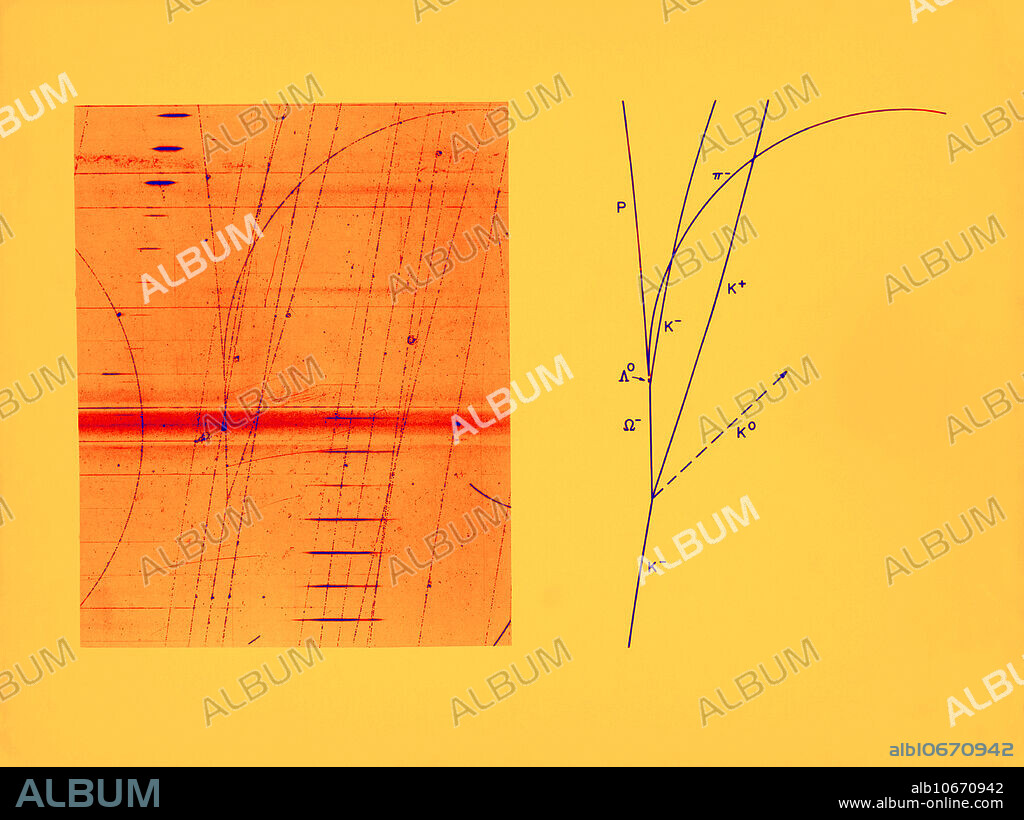alb10670942
Omega Particle, 3rd Observation

|
Add to another lightbox |
|
Add to another lightbox |



Title:
Omega Particle, 3rd Observation
Caption:
Liquid hydrogen bubble chamber photograph of the third observation of the production of a negatively-charged Omega meson. The sketch shows the proper assignments of a particle to each track. The paths of neutral particles, which produce no bubbles in the liquid hydrogen and therefore leaves no tracks, are shown by dashed lines. The presence and properties of the neutral particles are established by the analysis of the tracks of their charged decay products or the application of the laws of conservation of mass and energy, or a combination of both. The incoming K-negative meson from the Alternating Gradient Synchrotron collides with an unseen, stationary proton in the liquid hydrogen with the resultant production of a neutral K-meson, and positive K-meson, and the negative Omega-meson. The negative Omega-meson decays, after a lifetime of approximately one ten-billionth of a second, into a neutral Lambda hyperon and a negative K-meson. The Lambda hyperon then decays into a proton (p), and a negative Pi-meson. Photograph was taken in the 80-inch Liquid Hydrogen Bubble Chamber at BNL, 1964.
Personalities:
Credit:
Album / Science Source / Omikron
Releases:
Model: No - Property: No
Rights questions?
Rights questions?
Image size:
4828 x 3618 px | 50.0 MB
Print size:
40.9 x 30.6 cm | 16.1 x 12.1 in (300 dpi)
Keywords:
ACCELERATOR • AGS • ALTERNATING • BARYON • BROOKHAVEN • BUBBLE • CHAMBER • COLLISION • COLOR • COLOUR • CRASH • DETECTION • DETECTOR • ENHANCE • ENHANCED • GRADIENT • HISTORY • HYDROGEN • HYPERON • K • K-MESON • LAB • LABORATORIO • LABORATORY • LABORATORY; LAB • LAMBDA • LIQUID • MESON • MESONS • NATIONAL • NO ONE • NO-ONE • NOBODY • OMEGA • OMEGA-MESON • PARTICLE • PHYSICS • PI • PI-MESON • PROTON • QUARK • QUARKS • SMASH-UP • STRANGE • SYNCHROTRON • TRACK
 Pinterest
Pinterest Twitter
Twitter Facebook
Facebook Copy link
Copy link Email
Email

